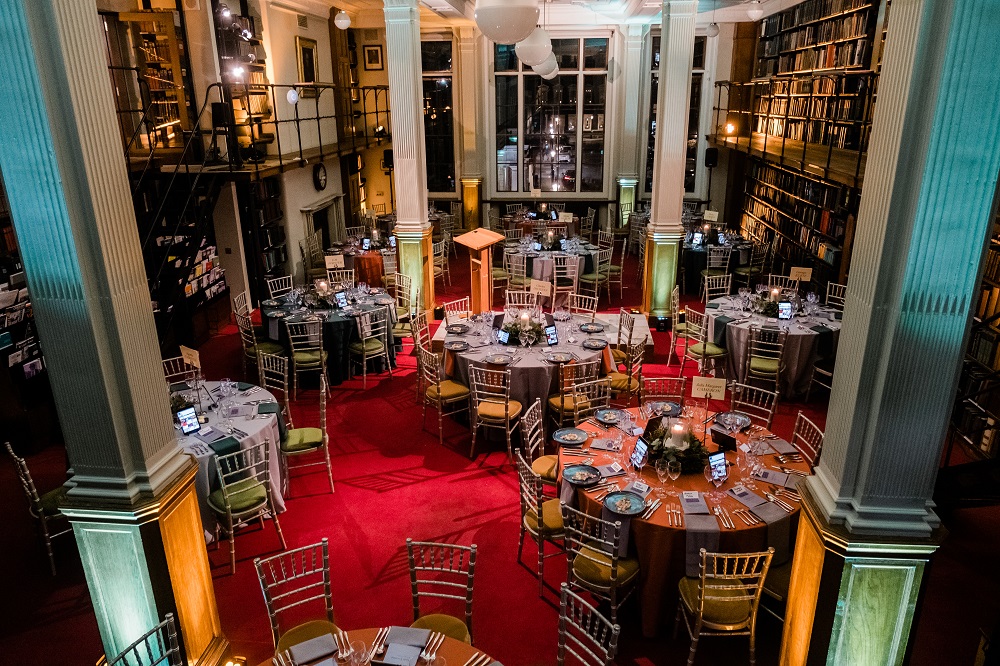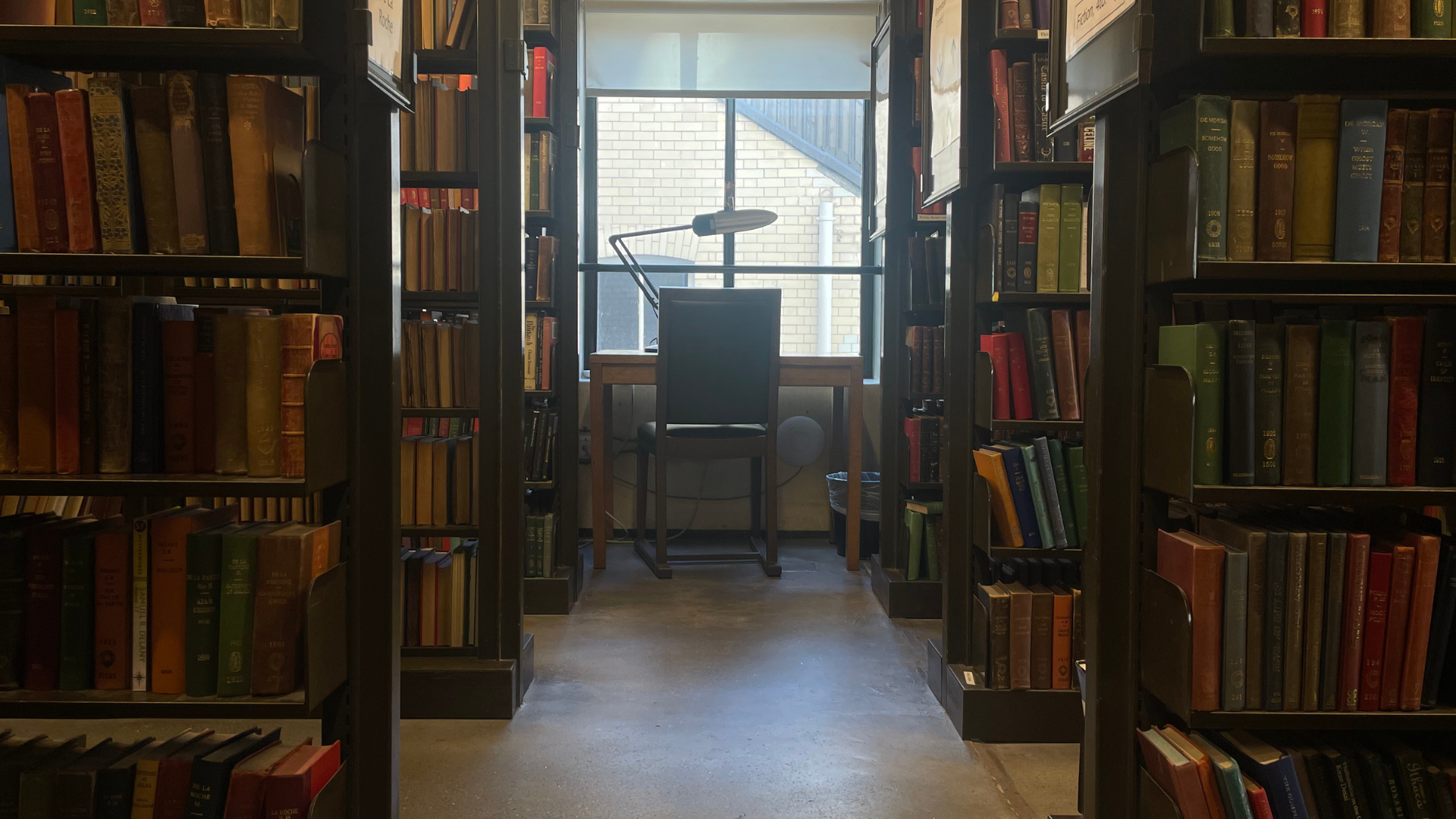The London Library’s vast collection of Russian material covers a wide range of printed works. The Russian element of the collections was first introduced by Robert Harrison, Librarian from 1857 to 1893. His successor, Sir Charles Hagberg Wright (Librarian from 1894 to 1940) had an even stronger interest in Russia, its culture, literature and currents affairs, having received part of his education in that country and being personally acquainted with Gorky and Tolstoy among others.
Our present-day Russian cataloguing and acquisitions specialist, Anna Vlasova, tells the story of one particularly fascinating treasure, The Ostrog Bible…
The London Library houses an extensive collection of Russian material, among which some gems of the early Slavonic printing can be found. Certainly the most treasured one is the first printed edition of the entire Bible in Old Church Slavonic. It was printed by the pioneer of Russian printing Ivan Fedorov in Ostroh (modern territory of Ukraine) in 1581 and is thus known as the Ostrog Bible. This monumental publication lavishly decorated with woodcut panels and initials that were cut by Fedorov himself presents a marvellous example of the 16th century Cyrillic type. The Ostrog Bible was the first Bible printed in Cyrillic, and it became a model for printing later Russian editions of the Bible.
The story behind the printing of the Ostrog Bible is fascinating and shows how the printing press could help advance one’s interests. From the outset, the printing of the first Bible in Old Church Slavonic was not a commercial endeavour, but rather a political move by Prince Constantine of Ostrog. Constantine was an ardent supporter, promoter and protector of the Eastern Orthodox Church, in spite of his domains being a part of the Polish-Lithuanian Commonwealth where Catholicism was dominant. To help him fight for his cause the prince decided to establish a printing press in Ostrog with the intention to publish the first complete Bible in Old Church Slavonic.
The greatest challenge of printing the biggest and the most authoritative book in the Christian world was to obtain the correct text of the Scriptures, therefore the hunt for manuscripts began much earlier than the actual press was established. Handwritten notes by a previous owner found pasted in the London Library copy of the Ostrog Bible shed some light on Constantine’s efforts to procure accurate manuscripts. ‘In order to obtain a correct text, The Duke [sic] assiduously collected all the M.SS. he could find’, read the notes, ‘but … he was not able to procure any codex containing the whole of the Scriptures in the Slavonic language.’ Luckily, in 1572 Constantine received a manuscript of the full Bible (the so-called Gennady’s Bible) in Old Church Slavonic from the Tsar Ivan IV (also known as Ivan the Terrible). However, many discrepancies and faults were detected by the collation, and therefore Constantine continued to gather and collate as many other manuscripts as he could lay his hands on. Constantine ‘wrote letters, and sent messengers to many distant parts, to Italy, The Islands of the Archipelago, to many Greek, Serbian, and Bulgarian monasteries, and even to the head of the Oriental Church, earnestly requesting that persons might be sent him who were skilled in the Greek and Slavonic languages, and that they might bring with them corrected and authenticated copies of the Sacred Text’. As we read further in the notes: ‘His application was not without success. Both labourers and M.SS. were forwarded to Ostrog, and by mutual consultation and aid, they prepared, in the course of some years, a copy of the whole Bible for the press’.
Two printing dates, 1580 and 1581, are found in the colophons of the surviving copies, which has caused some confusion as to the number of editions of the Ostrog Bible. However, it is now considered that there is only one edition, as the date on the title page is invariably 1581. As the collation and editing of the procured manuscripts took time, the printing of the Bible was delayed, and thus was finished in 1581, almost a year later than expected. To fill in the downtime of the printing press, parts of the Bible that didn’t need corrections, namely the Psalms and the New Testament, were printed separately in 1580.
At great expense and despite the difficulties and delays, Constantine succeeded in publishing the first Bible in Old Church Slavonic language, which became the authorised version of the Eastern Orthodox Church. Constantine immortalised his patronage in the form of his coat of arms printed at the back of the title page and in the introductory text where he declares that he ‘was made worthy to lay the foundation and to see the accomplishment of this most venerable, and superior to every thing work ’. Acting as a defender of the Eastern Orthodox faith Constantine distributed copies of the Bible in Bulgria, Serbia, Montenegro and Polish-Lithuanian Commonwealth. He also sent a number of copies to Ivan IV, who was so impressed by the Bible that he offered a copy to the English ambassador Jerome Horsey (c. 1550 – 1626). Horsey left Russia in 1591 and that was probably when the first copy of the Ostrog Bible travelled to the British soil. Horsey’s copy of the Ostrog Bible is now at the British Library.
Almost a hundred years after its printing, the Ostrog Bible remained the only Bible printed in Cyrillic characters, and only in 1663 a reprint, revised by Arsenios the Greek and Zakharii Afanasev, was published in Moscow. The London Library copy of the Moscow Bible, like the Ostrog Bible, came to us from the Allan Library. Around 350 copies of the Ostrog Bible are still in existence today, 13 of which are found in British institutions. It is known that Fedorov took 400 copies of the Bible with him when he left Ostrog, after falling out with the prince. The number of surviving copies suggests that the edition was quite substantial for the time, by some estimates of 1000 to 1500 copies.
The earliest ownership mark found on the London Library copy of the Ostrog Bible is a bookplate of Franz Gregor, Graf von Giannini (1688-1758), canon of Olomouc. As Constantine distributed the Bible all over Eastern and Southern Europe, it is not surprising to learn that it once was on the territory of Moravia, now part of the Czech Republic, and in the possession of a priest. Later the Ostrog Bible came in the collection of Thomas Robinson Allan (1799-1886) who formed a library to provide a resource for Wesleyan Methodist ministers. Allan travelled widely and was always on the lookout for rare and valuable books, so it is possible that he acquired his copy of the Ostrog Bible outside Britain. Finally, the Allan Library was acquired by the London Library in 1921 and Allan’s copy of the Ostrog Bible has been residing here ever since.
Anna Vlasova, Aug 2012


















